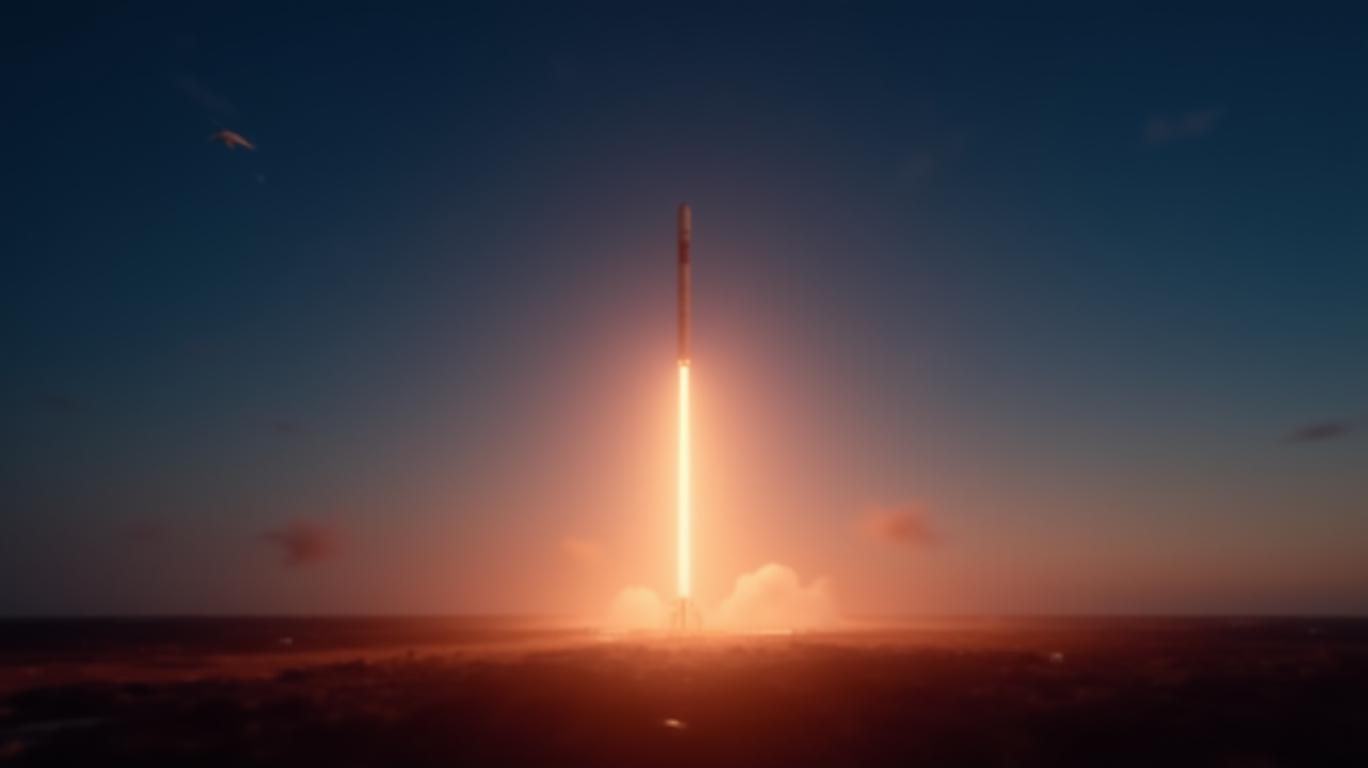AInvest Newsletter
Daily stocks & crypto headlines, free to your inbox
The night of April 28, 2025, marked a pivotal moment for SpaceX’s dominance in the satellite internet market. Two Falcon 9 rockets, launched within hours of each other from California and Florida, deployed 50 Starlink satellites into orbit—a feat underscoring the company’s relentless pace and technological prowess. This milestone, detailed in reports from Space.com, CBS 8, and the Associated Press, signals not just engineering
but a seismic shift in the global broadband landscape.
SpaceX’s April 28 launches exemplified its reusable rocket technology, a cornerstone of its cost-efficiency. The Florida mission’s booster, for instance, completed its 25th flight—a record for reusability—before landing on the droneship Of Course I Still Love You. This innovation reduces per-launch costs to as low as $30 million, a fraction of competitors’ expenses. As Space.com noted, such efficiency has enabled SpaceX to deploy over 8,400 Starlink satellites since 2019, far outpacing rivals like Amazon’s Project Kuiper, which has only 27 satellites operational as of April 2025.
The payloads themselves also advanced functionality. Thirteen Florida-launched satellites included direct-to-cell communication capabilities, bypassing ground infrastructure and expanding Starlink’s appeal for remote regions. “This isn’t just about quantity,” said a SpaceX engineer quoted by CBS 8. “We’re building a constellation that’s smarter, faster, and more accessible than any other.”
While SpaceX’s scale is unmatched, competitors are closing in. Amazon’s April 28 Kuiper launch—its first operational batch—highlighted its strategic countermove. Unlike Starlink’s 550 km orbit, Kuiper’s satellites feature sunlight-scattering coatings to mitigate light pollution for astronomers, a regulatory hurdle SpaceX has struggled with. However, Amazon’s slower pace and smaller constellation (only 27 satellites operational) leave it trailing.
Regulatory challenges also loom. India’s delayed Starlink rollout, pending licensing approvals, underscores the risks of overreliance on any single market. Meanwhile, Alphabet’s $8 billion unrealized gain from its SpaceX stake, noted in the Associated Press analysis, reflects investor confidence—a contrast to Amazon’s Kuiper, which has consumed $6 billion without yielding comparable returns.
SpaceX’s launch cadence is a double-edged sword. On one hand, its rapid deployment fuels market share growth; Starlink’s 7,200 operational satellites now serve over 2 million subscribers, generating $2.3 billion in 2024 revenue. On the other, the company faces diminishing returns. Each new satellite adds to a constellation already nearing its planned capacity of 40,000 units, raising questions about long-term demand.
Investors must also weigh SpaceX’s reliance on capital-intensive projects. While booster reuse lowers marginal costs, initial investments in rocket development and regulatory lobbying remain hefty. The Falcon 9’s 50th launch of 2025 alone represents a logistical marvel but also a drain on resources. “The next battleground isn’t space—it’s the bottom line,” warned an analyst at the Associated Press.
SpaceX’s April 28 launches crystallize its dual identity: a visionary pioneer and a pragmatic investor’s bet. With 25-flight boosters and direct-to-cell tech, the company is not just winning the satellite race—it’s rewriting the rules. Yet, as competitors like Amazon escalate their efforts and regulators scrutinize orbital congestion, SpaceX must balance ambition with sustainability. Investors should take note: while the company’s current trajectory is meteoric, the gravitational pull of market saturation and regulatory headwinds could soon test its resolve.
For now, the stars—and the stock market—belong to SpaceX. But as the AP’s data starkly illustrates, the next frontier is as much about fiscal discipline as it is about rocket science.
Tracking the pulse of global finance, one headline at a time.

Dec.24 2025

Dec.24 2025

Dec.24 2025

Dec.24 2025

Dec.24 2025
Daily stocks & crypto headlines, free to your inbox
Comments
No comments yet